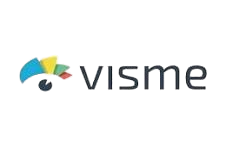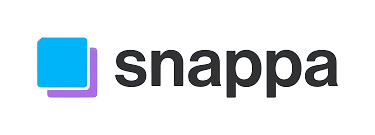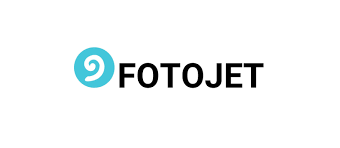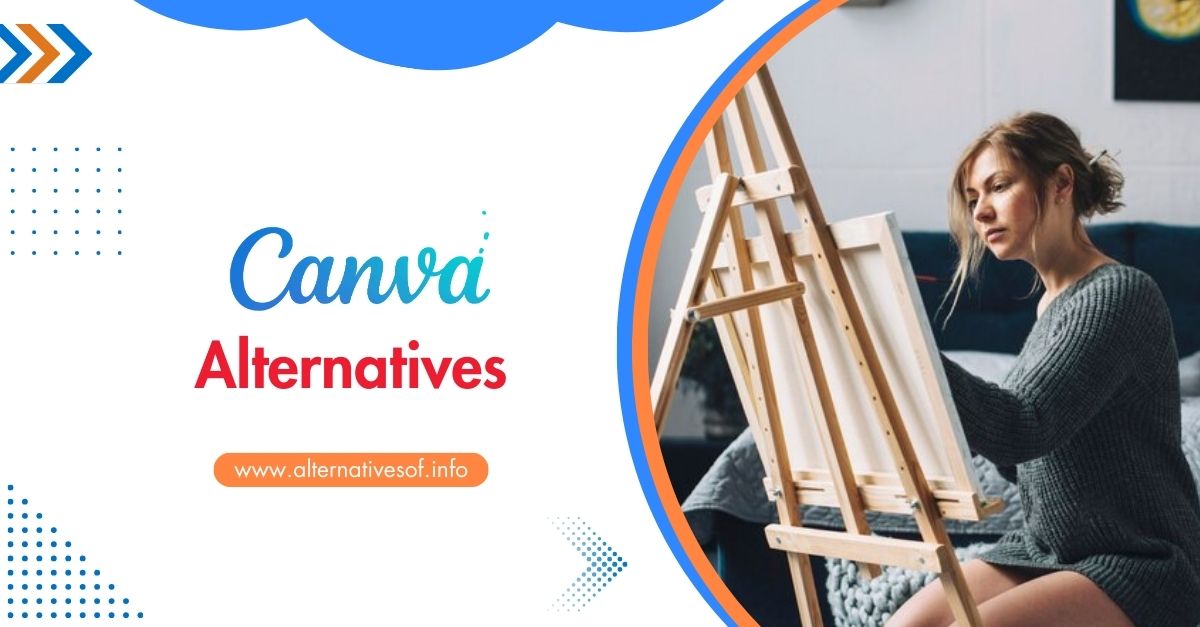Have you ever felt limited by Canvas features or pricing?
While Canva is undoubtedly one of the most popular graphic design tools, it might not be the perfect fit for everyone. Whether you’re a professional designer looking for more advanced tools, a business owner needing better collaboration options, or simply searching for a budget-friendly alternative, there are plenty of other great options available.
In this article, we’ll explore 17 of the best alternatives of Canva that cater to different design needs. From powerful editing capabilities to unique templates and customization options, these tools can help you create stunning visuals effortlessly.
Let’s dive in and find the perfect design tool for you!
Top 17 Best Alternatives of Canva 2025
While Canva offers a robust suite of design tools, several other platforms cater to varied design preferences and functionalities.
Below, we delve into some noteworthy alternatives, each bringing unique strengths to the table.
1. Adobe Express
Adobe Express, formerly known as Adobe Spark, is part of the renowned Adobe ecosystem, offering a suite of design tools that cater to both beginners and professionals.
Launched in 2016, Adobe Express provides an intuitive platform for creating a wide range of visual content, from social media posts to marketing materials.
Its integration with other Adobe products ensures a seamless workflow for users familiar with the Adobe suite.
Key Features:
Pros & Cons:
Pros
- User-Friendly Interface: Ideal for quick design projects without a steep learning curve.
- Affordable Pricing: Competitive pricing with a free basic plan and a premium plan at $9.99/month.
- Regular Updates: Continuous addition of new templates and features.
Cons
- Watermark in Free Version: Designs created under the free plan include an Adobe watermark.
- Occasional Software Glitches: Users have reported minor bugs affecting the user experience.
- Limited Templates in Free Version: Access to certain premium templates requires a subscription.
2. Visme

Visme is a comprehensive design platform that empowers users to create engaging presentations, infographics, and visual content.
With a focus on turning mundane data into captivating visuals, Visme is trusted by over 23 million users worldwide, including prominent organizations like IBM and the Golden State Warriors.
Key Features:
Pros & Cons:
Pros
- User-Friendly Interface: Intuitive design tools suitable for users of all skill levels.
- Robust Collaboration Features: Ideal for teams working on shared projects.
- Extensive Asset Library: Access to millions of free photos and graphics.
Cons
- Limited Social Media Integration: Direct posting to certain platforms may require additional steps.
- Privacy Features in Premium Plans: Advanced privacy settings are available only in higher-tier subscriptions.
- Learning Curve for Advanced Features: Some users may find advanced functionalities require time to master.
3. Snappa

Snappa is a user-friendly graphic design tool tailored for creating social media graphics, ads, blogs, and more. It offers a plethora of design templates and integrates seamlessly with platforms like Buffer for direct social media sharing.
Key Features:
Pros & Cons:
Pros
- Ease of Use: Simplifies the design process for users without prior experience.
- Direct Social Media Sharing: Streamlines the process of publishing graphics online.
- Affordable Pricing: Offers a free plan with essential features and premium plans starting at $10/month.
Cons
- No Animation Features: Lacks tools for creating animated graphics or GIFs.
- Limited Advanced Editing Tools: May not suffice for users seeking in-depth design capabilities.
- Watermark in Free Version: Designs created under the free plan include a Snappa watermark.
4. Stencil

Stencil is a straightforward design tool favored by bloggers, marketers, and small business owners for its efficiency in creating visuals.
It offers a vast library of templates and integrates seamlessly with WordPress, making it a valuable asset for content creators.
Key Features:
Pros & Cons:
Pros
- User-Friendly Interface: Ideal for quick design tasks without a steep learning curve.
- Direct Publishing: Easily share designs across various social media platforms.
- Affordable Pricing: Offers a free plan with basic features.
Cons
- Limited advanced customization.
- Premium plans can be costly
5. RelayThat

RelayThat is a design automation tool that is perfect for businesses and marketers who need consistent branding across different media formats.
It allows users to instantly generate multiple versions of a design without manually adjusting layouts, ensuring brand consistency across all platforms.
RelayThat is especially useful for those who want a fast, efficient, and automated design solution.
Key Features:
Pros & Cons:
Pros
- Excellent for brand consistency.
- Saves time with automated designs.
- No design skills required.
Cons
- Limited customization compared to manual design tools.
- No animation features.
- More expensive than some alternatives.
6. Fotor
Fotor is an AI-powered online photo editor and design tool that provides a wide range of editing capabilities for both beginners and professionals.
It offers advanced photo editing features, including AI enhancement, retouching, and background removal, making it a great choice for users who need more than just a template-based design tool.
Fotor is particularly popular among photographers and marketers who need quick yet powerful photo-editing solutions.
Key Features:
Pros & Cons:
Pros
- Excellent for photo editing and enhancement.
- AI-powered tools for easy retouching.
- Free version available with basic features.
Cons
- Some features require a premium subscription.
- Not as design-focused as other alternatives.
- Limited graphic design flexibility.
7. Crello
Crello is a powerful design tool that offers a wide range of templates and customization options, making it a solid alternative to Canva. It is particularly suited for social media creators, marketers, and small businesses looking for an intuitive yet feature-rich design platform.
The platform provides an extensive library of pre-designed templates, animations, and stock assets that allow users to create engaging visuals effortlessly. Whether you need social media posts, ads, or presentations, Crello has a user-friendly interface that simplifies the design process.
Additionally, Crello supports animation and video editing, making it an excellent choice for businesses that want to create eye-catching multimedia content without requiring advanced editing skills.
Key Features:
Pros & Cons:
Pros
- Ideal for creating animated and video content.
- Extensive template library for various design needs.
- Affordable pricing with a free plan available.
Cons
- Limited customization compared to high-end design tools.
- Free plan includes watermarks on some assets.
- Advanced features require a premium subscription.
8. VistaCreate

VistaCreate is a versatile graphic design platform aimed at individuals and businesses looking for an easy way to create high-quality visuals. It offers thousands of ready-to-use templates for social media, marketing materials, and business presentations.
One of the standout features of VistaCreate is its animation capabilities, allowing users to create motion graphics and animated ads effortlessly. The platform also provides access to a massive collection of stock images, icons, and illustrations.
With its simple drag-and-drop functionality, VistaCreate is an excellent tool for beginners and professionals who need a fast and efficient design solution.
Key Features:
Pros & Cons:
Pros
- Great for creating animated graphics and videos.
- Intuitive design tools for beginners.
- Affordable pricing and free plan available.
Cons
- Limited advanced editing tools compared to Photoshop.
- Some premium assets require payment.
- No offline editing options.
9. Piktochart

Piktochart is a data visualization and infographic design tool that is widely used by businesses, educators, and marketers to create professional-quality infographics, reports, and presentations.
Unlike traditional graphic design tools, Piktochart focuses on making complex data more visually appealing and easier to understand through smart layouts and design elements.
It is an excellent choice for users who need to turn data into engaging visuals without requiring extensive design experience.
Key Features:
Pros & Cons:
Pros
- Perfect for data visualization and reports.
- Easy-to-use interface for beginners.
- Free plan available.
Cons
- Limited for general graphic design needs.
- Some templates are locked behind a paywall.
- Not ideal for creating animated content.
10. DesignCap
DesignCap is an online graphic design tool focused on creating marketing materials such as posters, flyers, social media graphics, and presentations.
With a vast library of templates, fonts, and design elements, DesignCap makes it easy for users to create professional-looking visuals. The platform caters to businesses, marketers, and educators looking for an efficient and cost-effective design solution.
Its simple interface ensures that even beginners can create high-quality designs with ease.
Key Features:
Pros & Cons:
Pros
- Affordable pricing with a free plan available.
- No design skills required.
- Wide variety of templates for different needs.
Cons
- Limited advanced design features.
- Free version has fewer templates.
- Some premium features require payment.
11. Easil
Easil is a design tool that focuses on branding and marketing materials. It is designed for businesses and teams that need consistent, professional visuals.
One of Easil’s standout features is its brand kit functionality, which allows users to maintain consistency in colors, fonts, and logos across all designs. This makes it a great choice for social media marketers and agencies.
The platform offers a wide range of templates and easy customization options, making design creation straightforward and efficient.
Key Features:
Pros & Cons:
Pros
- Perfect for brand consistency.
- High-quality templates.
- User-friendly interface.
Cons
- Free plan has limited features.
- Some templates require a premium subscription.
- No advanced animation or video editing tools.
12. Pixlr
Pixlr is a powerful online photo editor that is great for users looking for a Canva alternative with more advanced image editing capabilities.
It offers a set of tools similar to Photoshop but in a more simplified and user-friendly interface. Pixlr is ideal for photographers, designers, and marketers who want to edit images with precision.
With AI-powered features and various filters and effects, Pixlr makes it easy to create high-quality visuals.
Key Features:
Pros & Cons:
Pros
- More powerful photo editing than Canva.
- AI tools for quick adjustments.
- Free version available.
Cons
- Learning curve for beginners.
- Some advanced features require a subscription.
- No template-based design tools.
13. Desygner
Desygner is a design platform that allows users to create marketing materials, social media posts, and presentations with ease.
It is particularly useful for non-designers who want to create high-quality visuals without needing professional software. Desygner offers a mobile app, making it convenient for users who want to design on the go.
The platform also provides brand kit management, allowing businesses to maintain consistency across their designs.
Key Features:
Pros & Cons:
Pros
- Easy to use for beginners.
- Mobile-friendly design app.
- Free plan available.
Cons
- Some features are locked behind a paywall.
- Not as many templates as Canva.
14. Venngage
Venngage is a design tool specifically geared toward creating infographics, reports, and data visualizations. It is ideal for businesses, educators, and marketers who want to communicate complex information in a visually appealing way.
With a variety of professionally designed templates, Venngage makes it easy to create stunning infographics without design experience. Users can customize layouts, colors, and graphics to match their brand identity.
Venngage also provides collaboration features, making it a great tool for teams working on reports, presentations, and marketing materials.
Key Features:
Pros & Cons:
Pros
- Excellent for creating infographics and reports.
- Wide range of templates and design elements.
- Easy-to-use interface for beginners.
Cons
- Limited free plan with watermarks.
- Premium plans can be costly.
- Not ideal for general graphic design needs.
15. FotoJet

FotoJet is an online design tool that combines graphic design, photo editing, and collage-making into a single platform. It is perfect for individuals and small businesses looking for an easy-to-use design solution.
The platform provides thousands of templates for social media graphics, flyers, banners, and invitations. Its photo editing tools allow users to enhance and customize images with filters, effects, and text overlays.
With its user-friendly interface and powerful features, FotoJet is a great alternative to Canva for those who need both design and photo editing capabilities.
Key Features:
Pros & Cons:
Pros
- Easy to use for beginners.
- Versatile design and photo editing tools.
- Large library of templates and effects.
Cons
- Free version has limited features.
- No advanced vector editing capabilities.
- Lacks collaboration tools.
16. Affinity Designer
Affinity Designer is a professional graphic design software that offers a powerful alternative to Canva for advanced users. It is a great choice for illustrators, graphic designers, and businesses that need high-quality vector graphics.
Unlike Canva, Affinity Designer provides precision tools for creating logos, branding materials, and detailed illustrations. It supports both raster and vector graphics, making it a versatile tool for professional design work.
With a one-time payment model, Affinity Designer is a cost-effective option for users who want a premium design tool without ongoing subscription fees.
Key Features:
Pros & Cons:
Pros
- High-quality design capabilities.
- No recurring subscription fees.
- Ideal for professionals and businesses.
Cons
- Steeper learning curve for beginners.
- Lacks built-in templates like Canva.
- No cloud-based collaboration.
17. Gravit Designer

Gravit Designer is a vector-based design tool that offers both online and desktop versions. It is a great alternative for users looking for an advanced design tool with powerful vector editing capabilities.
The platform provides a comprehensive set of tools for creating illustrations, marketing materials, UI designs, and branding elements. It is highly customizable, allowing users to create professional-grade graphics with ease.
Gravit Designer offers a free version with essential tools, while the Pro version unlocks advanced features like offline access, CMYK support, and unlimited cloud storage.
Key Features:
Pros & Cons:
Pros
- Powerful vector design capabilities.
- Available as both a web-based and desktop tool.
- Free version with basic features.
Cons
- Pro version required for offline access and advanced tools.
- Learning curve for beginners.
- Not as template-focused as Canva.
How We Tested the Best Canva Alternatives
To identify the best Canva alternatives, we evaluated each tool based on the following factors:
FAQs – Best Alternatives Of Canva
1. Is there a free alternative to Canva?
Yes, many tools like VistaCreate, Fotor, and Pixlr offer free plans with essential design features.
2. Which Canva alternative is best for professional designers?
Adobe Express and Photopea provide advanced editing tools similar to Photoshop.
3. Can I use these Canva alternatives for commercial purposes?
Most platforms allow commercial use, but it’s best to check individual licensing terms.
4. Which Canva alternative is best for social media graphics?
Crello and VistaCreate offer pre-designed social media templates and animation features.
5. What is the best Canva alternative for beginners?
VistaCreate and Desygner are beginner-friendly with simple drag-and-drop tools.
Conclusion – Best Alternatives Of Canva
While Canva remains a powerful and widely used design tool, it’s not the only option available. Whether you need advanced photo editing, AI-driven design assistance, or better collaboration features, there’s a platform tailored to your needs.
Some alternatives offer greater customization, while others focus on affordability or automation ensuring that every user, from professionals to beginners, can find the right fit.
Ultimately, the best choice depends on your workflow, budget, and creative goals. By exploring these Canva alternatives, you can discover a tool that enhances your design process and helps you create stunning visuals with ease.
Take the time to try different options and find the one that truly aligns with your creative vision!

